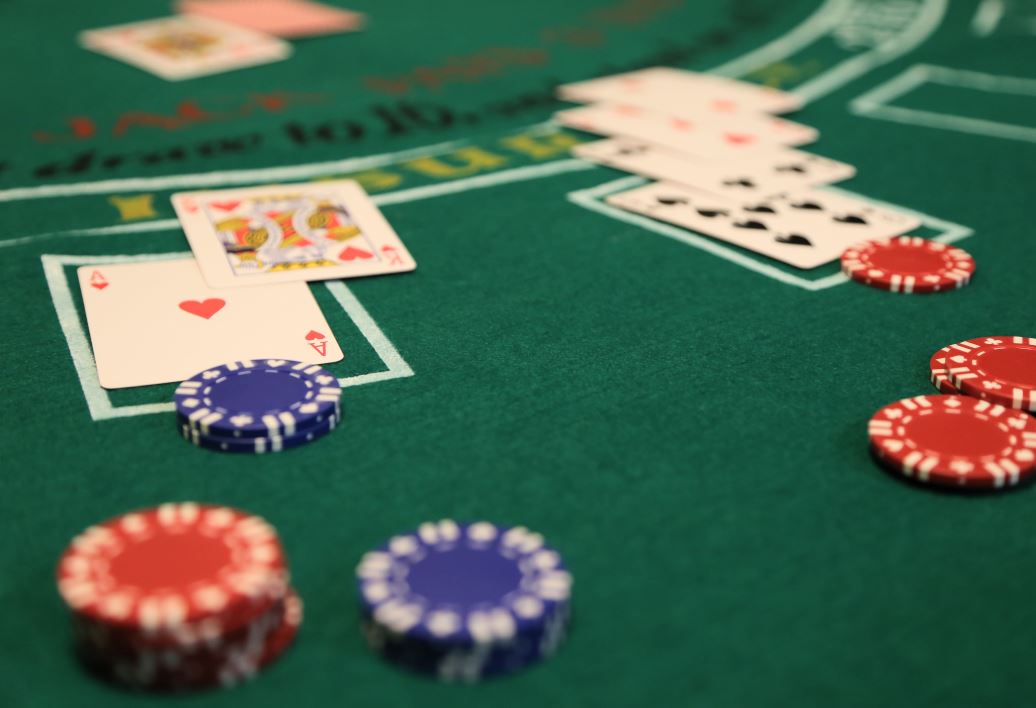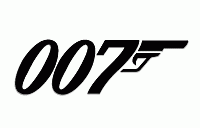Learn to Count Cards in Blackjack in Fifteen Minutes
Counting cards in Blackjack is one of the few ways that professional gamblers can actually gain a slight advantage over the house in casino gaming. It’s commonly believed that you have to be a math whiz to be able to count cards, but I hope to show you that anyone can do it. While non-professionals like you or I might not actually get an advantage over the casino, we can come damn close, and at the very least, make our money last longer!

Card Counting Myths
First, I want to dispel some common misconceptions about counting cards in Blackjack:
- Myth: Counting cards is illegal and you could go to jail
This is probably the biggest misconception and it’s just not true. In fact, I got my first book on Blackjack, which included an explanation of card counting, from a Las Vegas casino gift shop! It is true that the casino can ban you from their establishment if they think you are counting cards. Also, if you use a device to count cards, that is illegal. - Myth: Counting cards is really hard
The media would have you believe that you have to be some sort of “Rain Main” savant to count cards. The truth is, if you can remember a single number, usually less than ten, and add and subtract one to that number quickly, you can count cards. It just takes a little practice to become proficient. - Myth: It is impossible to count cards in a multi-deck shoe
This is also another myth perpetuated in movies and TV. It’s no harder to count cards in a six-deck shoe than a one deck shoe. It’s just less effective.
I also want to emphasize that even when done perfectly, card-counting only gives you a minuscule advantage over the house. An expert would have to go through a LOT of hands before seeing any profit at all. I see card counting as more a way to make my money go further and to extend my playing time rather than a way to make money.
Why Card Counting Works
Let me explain the basic theory behind card counting. The fundamental reason why it works is that a deck that contains a lot of tens, face cards, and aces is more beneficial to the player than for the dealer. I’m not going to go into why that is, but you can research it on your own. For now, just take my word for it.
Armed with this knowledge, you can gain some insight into how to bet on future hands by looking at the cards that have been played from the deck (or shoe). For instance, if a lot of “good” cards (tens, face cards, and aces) have been played from the deck, you know that the remainder of the deck will have fewer of these cards, and the advantage is with the dealer. In this case, you would bet less or just make the minimum bet. If, on the other hand, a lot of “bad” cards were played, you know that the remainder of the deck has a lot of beneficial cards. In this case, you would raise your bets.
How It’s Done
Now on to the actual mechanics of card counting. The basic technique is to keep a running tally as players’ cards are flipped over on the table.
Cards with a -1 Count: Ace, 10, Jack, Queen, King
The following cards have a count value of negative one (-1):





The reason a negative value is assigned to these cards is that if you see a lot of them on the table, it means that the remainder of the deck has fewer of them, which is bad for you, the players.
Cards with a Zero Count: 7, 8, 9
The following cards are “neutral” cards and have a count value of zero, i.e., sevens, eights, and nines:



Don’t add or subtract anything from the count when you see these cards flipped over.
Cards with a +1 Count: 2, 3, 4, 5, 6
The following cards have a count value of positive one, i.e., twos, threes, fours, fives and sixes:





These are assigned a positive value because if you see a lot of these cards on the table, it means there are fewer of them remaining in the deck, which is good for you, the player. So basically, as the dealer flips over hands that have been played, you’ll keep a tally of card values that you see based on the assignments above.
Some Examples
Suppose the current tally is zero, and a player at your table busted with these cards:




You would add +1 for the five, 0 for the seven, +1 again for the two, and -1 for the Queen to get a count of +1. Let’s say the dealer flips over the next player’s cards as follows:



The current count is +1. So, to that you would subtract 1 for the ace, add 1 for the three, and add 1 for the five to get a count of +2. As I said, you’ll have to tally very quickly, because the dealer doesn’t leave the cards on the table for very long. With practice, you can improve. I usually bring a pack of cards with me to Vegas and practice in the hotel for a while before going out.
One tip I have to make it easier to count is to pair off positive and negative cards, so that you don’t have to actually count them. They cancel each other out. So, say you see an Ace, a 3, and a 5, like the example above. I visually look at that and say to myself “the Ace and 3 cancel each other out, so the count from that hand is +1 for the 5”. I’ve saved myself the trouble of counting two of the cards.
Betting
When the count is very positive, you bet more. When negative, you bet less. Now, I am vastly simplifying the strategy here, but when I see a +3 or +4 count, I start getting excited and raising my bets. However, the perfect betting strategy depends on how many decks were in the shoe and how many of the cards are left. If there are a lot of cards still in the shoe, the count is less important than if there is a small number of cards in the shoe. This part is more complicated and I leave it to you to research if you’re interested. One rule of thumb is to divide the count by the number of decks in the shoe to get a more realistic count value.
But, as you can see, basic card counting is not as hard as it is made it out to be. YOU can do it. And as I said before, it’s NOT illegal, but you could be escorted out of a casino if they think you’re counting cards. If that ever happened to me, I’d be stoked, because it means I probably made a lot of money up to that point! But, you should be careful not to be too obvious about it, like moving your lips while counting, haha. You have to be casual and not look like you’re counting. Tipping your dealer might make him less likely to “notice” card counting.
You Need to Memorize Basic Blackjack Strategy
Even more important than card counting though, is knowing basic Blackjack strategy, namely, when to hit, fold, split, double down, etc. If you don’t know basic Blackjack strategy, all of the card counting the world won’t stop you from losing money.
If you don’t like memorizing things, this part might actually be more difficult than the card counting part! But, there are some rules of thumb that make it easier, such as “always split aces and 8’s”, and “assume the dealer has a ten as his down card”.
Note that using Blackjack strategy charts will make your money last much longer than wild uneducated play, but alone it won’t give you an advantage over the house. You can only do that by counting cards in addition to memorizing the charts.
Can I Make Money on This?
But, don’t count cards with the expectation of making a profit over the casino. I do it for fun, and to make my money last longer at the casino. Card counting can give you a minuscule advantage over the house which you’ll only see after playing for a long period of time with lots of money, and only if you play your cards flawlessly according to the charts and bet correctly. And, casinos are constantly looking for ways to make card counting less effective, like adding more decks to the shoe., reshuffling often, etc.
I am not a master Blackjack player, so I certainly don’t have an advantage over the house even if I count cards; I just do it to get the most playing time for my money and for fun. Also, gambling can be a serious problem. I always have a set budget to spend BEFORE I walk into the casino. I assume I’ll lose all of it. If and when I do, I stop.
Team Card Counting
I want to mention one innovation in the history of card counting: team card counting, made famous by MIT card-counting teams. This is a really cool idea, where you have multiple players at different tables, all counting cards. Using subtle signals, they indicate when the count at their table is really positive (good). When this happens, the other team members head to that table and plop down big opening bets.
The cool thing is that this doesn’t initially look like card counting to the casino, because card-counters don’t usually make big opening bets.
Where to Go From Here
I’ve only touched on the very basics here. The main reason I wrote this article is to show you that card counting is NOT as hard as it is made out to be. If you are really interested in using these techniques, there are lots of great Blackjack books out there.
Or, if you’re just a casual gambler, just memorize a simplified version of the Blackjack chart and give card counting a try. By just doing these two things, you’ll do better than most players out there who are completely clueless, even if your card counting is not perfect.
I hope this short article has shown you that you don’t need to be a genius to count cards. In my opinion, it adds some fun to the game of Blackjack, and if it makes your money last longer, that’s a great side-benefit! – Brian
Disclosure: Some of the links on this page are affiliate links. This means if you click on the link and purchase the item, I will receive an affiliate commission at no extra cost to you. I test or research each product or service before endorsing. This site is not owned by any retailer or manufacturer. I own this site and the opinions expressed here are mine. As an Amazon Associate, I earn from qualifying purchases.







Please Leave a Question or Comment
I try to answer each one! - Brian
Nice job, Brian. Clear and right to the point. You were able to simplify some very complicated principles in a direct and easy-to-understand manner.
Thank you.
Thanks so much for your feedback Kyle!! – Brian